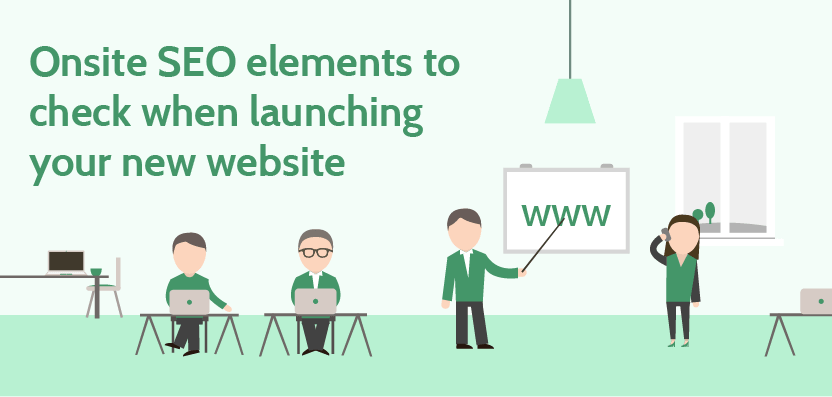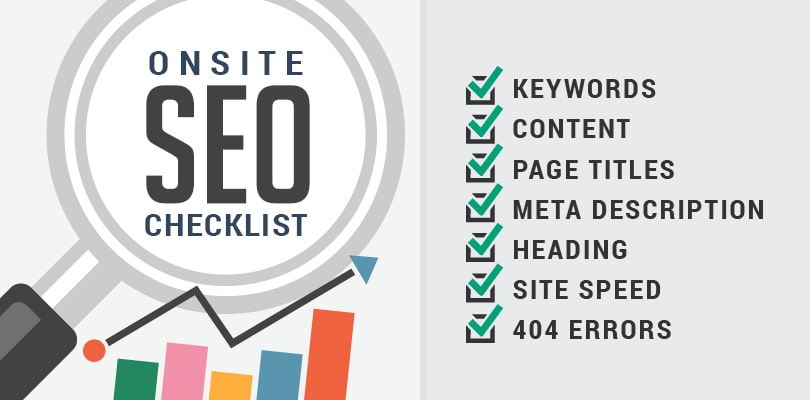OK, you are done with on-page SEO and Off-page SEO. Now, here comes the very important part in SEO i.e. On-site SEO. This SEO technique takes care of the user interaction and user experience. How a user behaves when it reaches your site matters a lot because you know this game is all about user satisfaction. We have to stay focused on improving the level of information and how well it works for the user.

The things that we have to take care of while doing on-site SEO is:
- How good is your website with the loading speed?
- How well it works with URL and its criteria.
- How many links are broken in your website?
- Value of the links that are coming to your websites.
These above mentioned points are the most important while you want to do on-site SEO in your website.
And, we have to ask our self whether the website stands still on these parameters or not.
Let Us Check The Factors On-Site SEO

- No duplicity please: This has been an important and very basic factor in overall SEO process. As, Google is fully dedicated towards the user experience and wants to provide the most useful relevant information to its user so, we have to always keep our content unique and fresh. Because there is no use of showing your page at the top over the sites that are high in authority with same content published earlier than yours.
- Loading speed: Loading speed is the time taken by your website for loading. It means if someone knocks at your website but it takes hell lot of time for webpage to get download then obviously that user will either leave your page or will have a bad experience. In both of the cases your website leaves a bad mark or impression on the user as well as it gave your user a very bad experience while they were on your website. To increase the loading speed we have to work on the HTML and CSS codes. We have to design the coding structure in a manner that it does not take more time to load. We just use short and compressed coding for HTML and CSS. We also make our HTML and CSS codes in a manner that they can interact with your Java scripts easily.
- Titles and Meta descriptions: Titles are the front face of your webpage. Depending upon how tempting your title is, customer will approach your content. Title should contain your main keywords as well some attractive additional factors that will force the user to click on your content. On the other hand Meta description is the quick introduction about the content you have in your website. The description of a webpage is limited to 160 words for Google search engine. In these 160 words it should cover up all the details about your webpage and content now, it’s you who need to be very creative in order to write a quick and brief description. This is usually done for the user so that they will have an idea about the content in the webpage and accordingly they can choose which one to go for.
- Mobile friendly website: As per the changing scenario of present WWW. We clearly understand that the major population is shifting from desktop to mobile devices and they use mobile phones to surf internet. If these many users are shifting to mobile phones so it is really necessary for a website owner to maintain or develop your website in a manner that it should serve to the mobile users as well. For this purpose Google has introduced its mobile crawlers that will go through your website and check for its mobile friendly characteristics. This has become an important part in on-site SEO or in general SEO.
- Media optimization: Especially here we are going to discuss about images that we use in our post. Ok so what about them? Every image or media content in our webpage is linked to some address or text that refers to the content of our page. While attaching any image to your website you have to assign the alt text to the file, that alt text should be relevant text with the topic of your post.
- Links: The links that are linking to your website or coming to your website should not pass the bad value or should not have broken links. Make sure that the deleted pages or moved pages are properly redirected using 301 and 302 re-directories. 301 is for permanent and 302 for temporary directories.
- Indexing and accessing: You have to make sure that your website can be properly indexed and accessed by the Google otherwise; Google might find it difficult to index it and will not be able to access it whenever needed by the user. And, you will not be ranked among other SERP results. In this you have to take care of XML sitemaps, robot.txt files and HTTP status code with its return time.
- Content optimization: Content should be fully optimized according to SEO. It should be lengthy as the user visiting your page must get all the information he wants. Content should be nearly 2000-2500 words. One should use proper keywords at relevant places, and insert them in heading tags, meta title, meta description. Proper use of bold and italics, headings, subheadings etc help to engage user more easily and thus enhance user experience.
These are few points that governs your on-site SEO and following these things will surely help your website in ranking with Google.

